What Are the Best Mulches to Avoid Termites? 5 Effective Deterrents
-
Cheryl Regan
- Last updated:
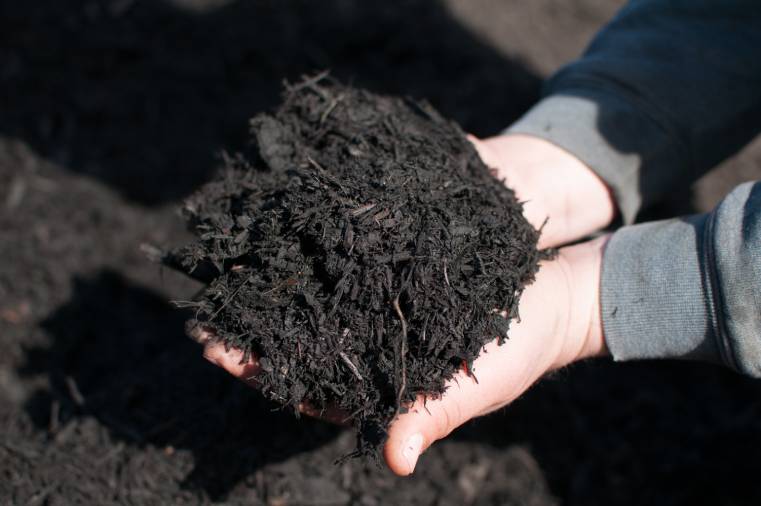
There are countless benefits to mulching your garden—from feeding your favorite trees and plants with nutrients to preventing frost, and everything in between. But certain mulches, like softwood or pine bark mulch, can attract termites into your backyard, and potentially into your home.
Don’t worry! You won’t have to give up mulching your garden. In this article, we’ll share 5 options for termite-resistant mulch.
The Top 5 Mulches to Avoid Termites
1. Melaleuca Mulch
- Our Choice: FloriMulch 1.5-cu ft Natural Melaleuca Mulch
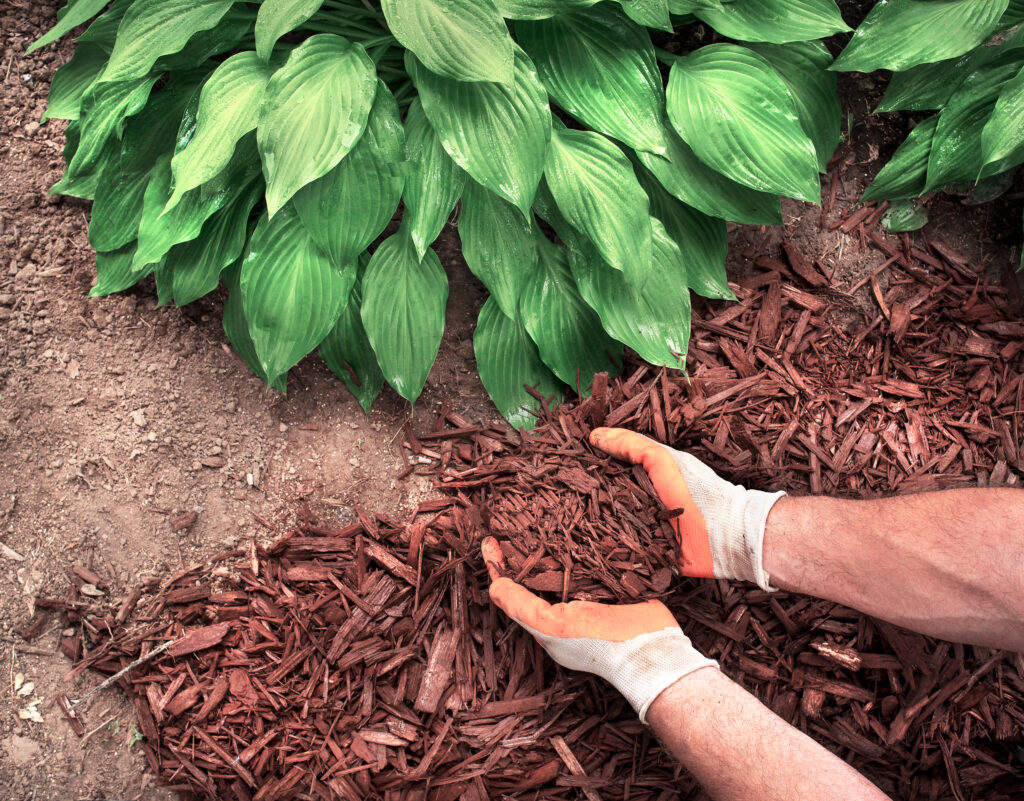
Made from Melaleuca, commonly known as tea tree, this hardwood mulch is said to be termite resistant, yet friendly to earthworms.
Aside from its obvious benefits, this mulch is also an environmentally friendly option. Melaleuca is a non-native invasive plant that grows perpetually in South Florida, so by using it for mulch instead of a native tree, like pine, you’ll be contributing to controlling an invasive tree, whilst preserving a native one.
Melaleuca mulch is an attractive, earthy brown in color. It can be used around trees to hold moisture and to act as insulation during cooler months. Melaleuca mulch doesn’t float, and it should last for a couple of years.
2. Licorice Root Mulch

Licorice root mulch is a byproduct of the licorice industry. This option does not come cheap! Licorice root mulch can be double or even triple the price of regular hardwood mulch, but for good reason. Aside from being a good option for avoiding termites, licorice root has antifungal properties that can inhibit the growth of artillery fungus.
Use licorice root mulch if you’re looking for a darker, almost black mulch for your garden. It’s great for mulching around roses, azaleas, and other shrubs and trees, as well as for landscaping.
3. Cedar Mulch
- Our Choice: 100% Natural Cedar Shavings Mulch
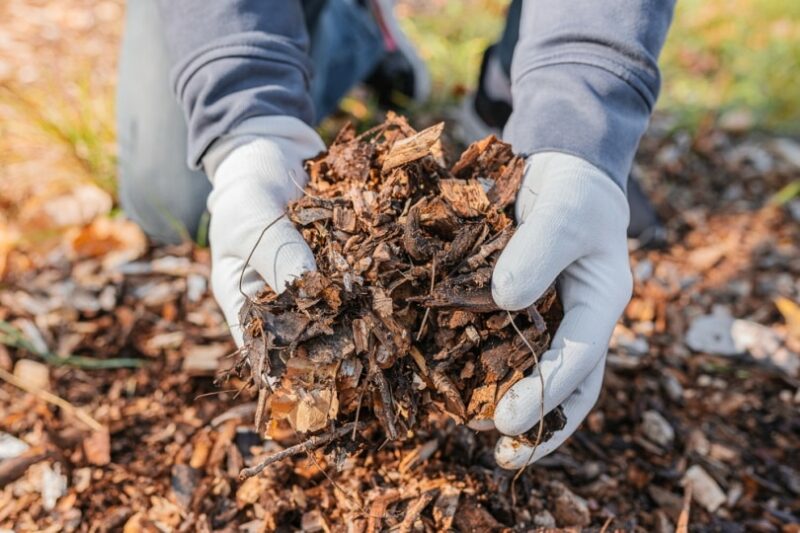
Made from evergreen cedar trees, this mulch usually has an attractive red or orange hue that contrasts brilliantly with green foliage and lawn. Cedar mulch is a natural insect repellent and helps to keep termites, as well as ticks and fleas, away. Additionally, cedar mulch is long-lasting, so you won’t need to replace it every few months!
Cedar mulch is widely available in different forms and sizes, including shavings and chippings. This insect-repelling cedar mulch by Cedercide comes as smaller granules that look great when placed in flower beds and around plants.
4. Rubber Mulch
- Our Choice: Playsafer Rubber Mulch Nuggets
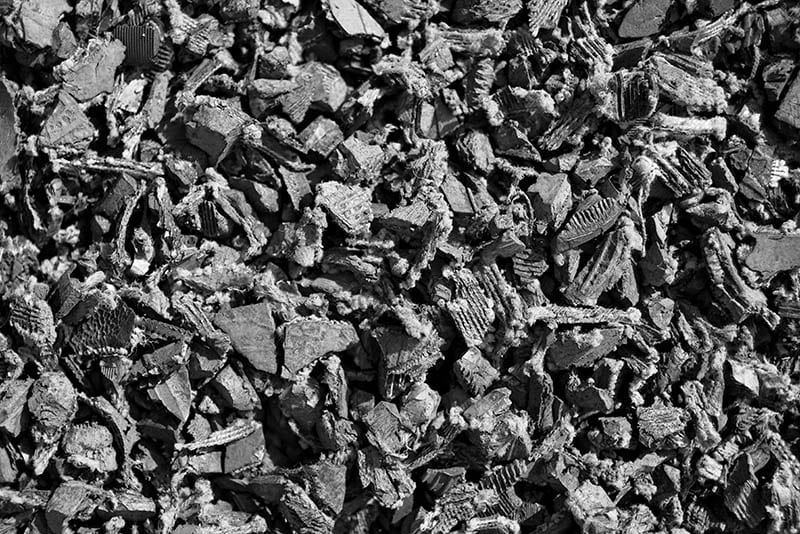
Inorganic rubber mulch can last for up to 10 years, reducing the amount of maintenance and overall cost to homeowners. Termites aren’t attracted to rubber mulch in the way they are to softwood. Weeds also have a hard time growing through a few inches of rubber mulch, and unlike wood, rubber is not susceptible to mold and fungus.
We especially like the look of Rubberific’s natural-looking Earthtone mulch, made from recycled, shredded rubber.
5. Redwood Mulch
- Our Choice: MIGHTY109 Shredded Redwood Mulch (Gorilla Hair)
Although termites usually like softwood, this isn’t the case with redwood. Redwood contains a resin that termites avoid. If you’re looking for a naturally termite-resistant softwood mulch, then redwood is a good option. Redwood comes in bark and shredded forms, and can last a few years. Some gardeners prefer redwood for its rich red color.
Shredded—or “gorilla hair”—redwood mulch is a good option for areas that are sloped or prone to erosion because the fibers tend to knit together and stay put. This mulch is a great insulator, and if you’re conscious of sustainability, then you’ll be pleased to know that this mulch is usually made as a byproduct of the lumber industry—instead of being dumped, the waste is used to create this mulch.
 Why Does Mulch Attract Termites?
Why Does Mulch Attract Termites?
Termites like mulch for the same reason your plants do! When you place down a thick layer of organic mulch, it traps much-needed heat and moisture, creating an ideal place for termites and other critters to hide and reproduce.
Chances are, the termites already exist deep in the earth before you place down any mulch, but the extra cover gives them the opportunity to surface. That’s why it’s important to always leave a gap between the area you mulch, and the walls of your home.
Tips for Preventing a Termite Infestation
- Leave a gap of at least 6 to 8 inches between buildings and mulch. This will decrease the chances of termites attacking the foundation of your home, but if they did create mud tunnels, you should be able to spot them easily.
- Termite-resistant mulch should be inspected and changed regularly, before losing its insect-repelling qualities.
- Make sure water and moisture are not gathering near the building’s foundation.
- Store firewood away from buildings, and never leave wood stacked against the side of your home.
- Check your home regularly for mud tunnels, damaged wood, and other signs of termite infestation.
 Wrapping Up
Wrapping Up
There are many options of organic termite-resistant mulch, including melaleuca, redwood, cedar, and licorice root mulch, but inorganic options may work for you too. Shredded rubber mulch not only looks great, but it also makes for a soft surface—great for those with young children running around.
If you’re looking for something that’s environmentally friendly, we recommend Melaleuca Mulch. But if low-maintenance is your priority, then Rubberific’s Earthtone rubber mulch may be what you’re looking for!
Featured Image Credit: Black Mulches, Shutterstock
Contents

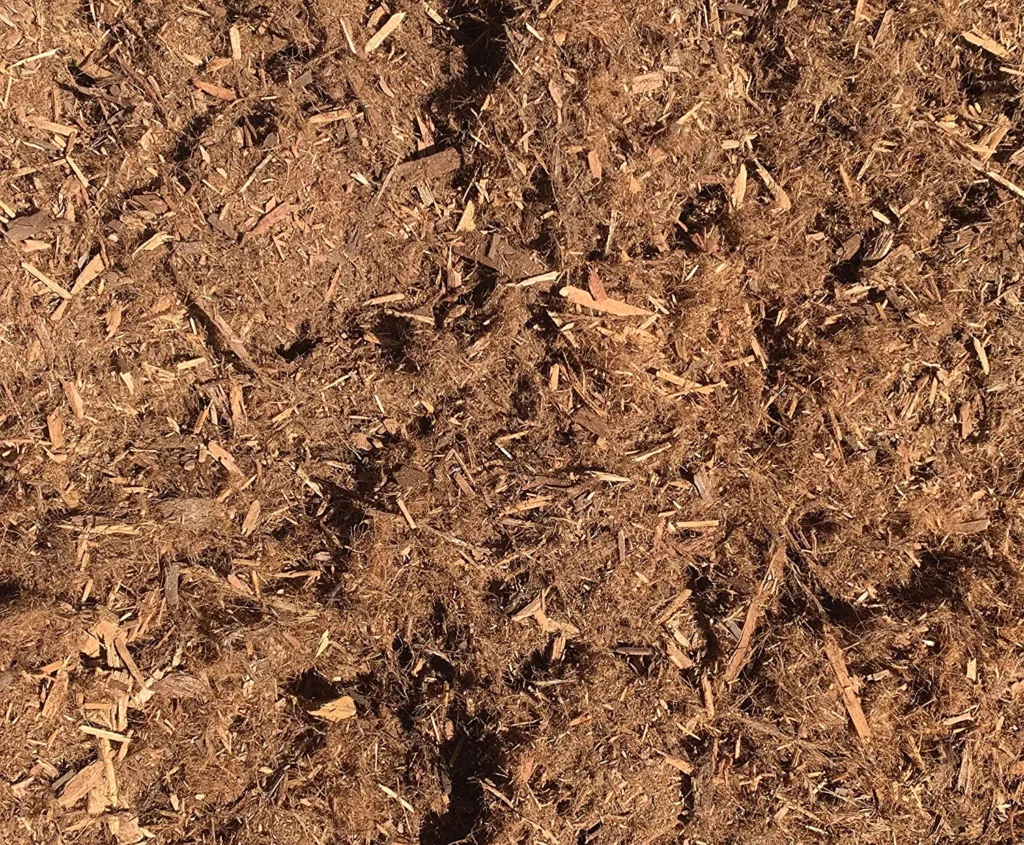
 Why Does Mulch Attract Termites?
Why Does Mulch Attract Termites?